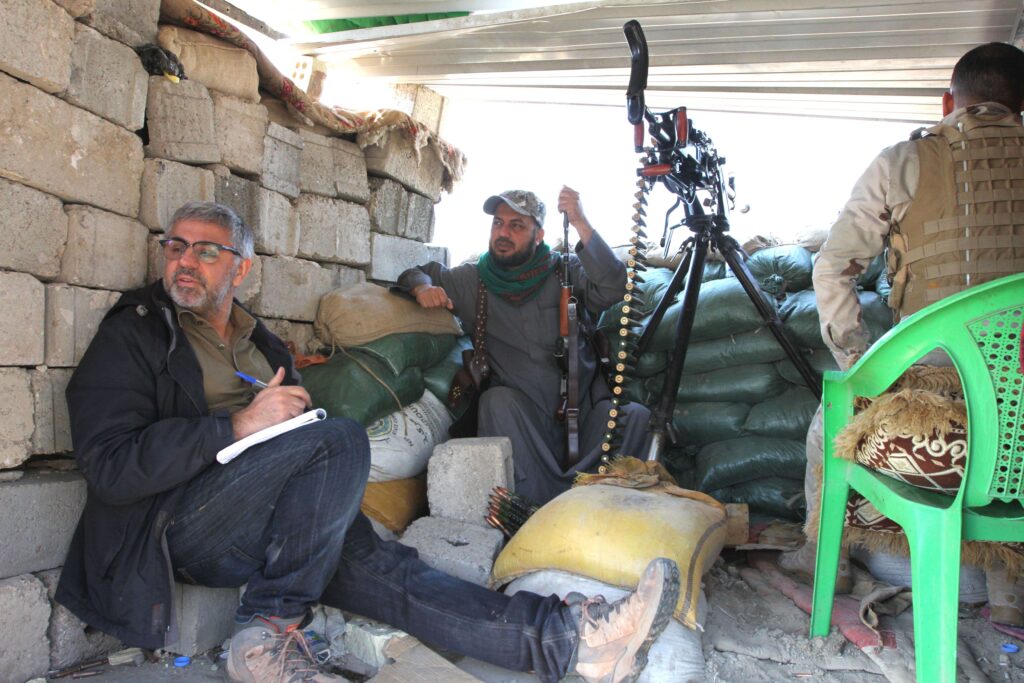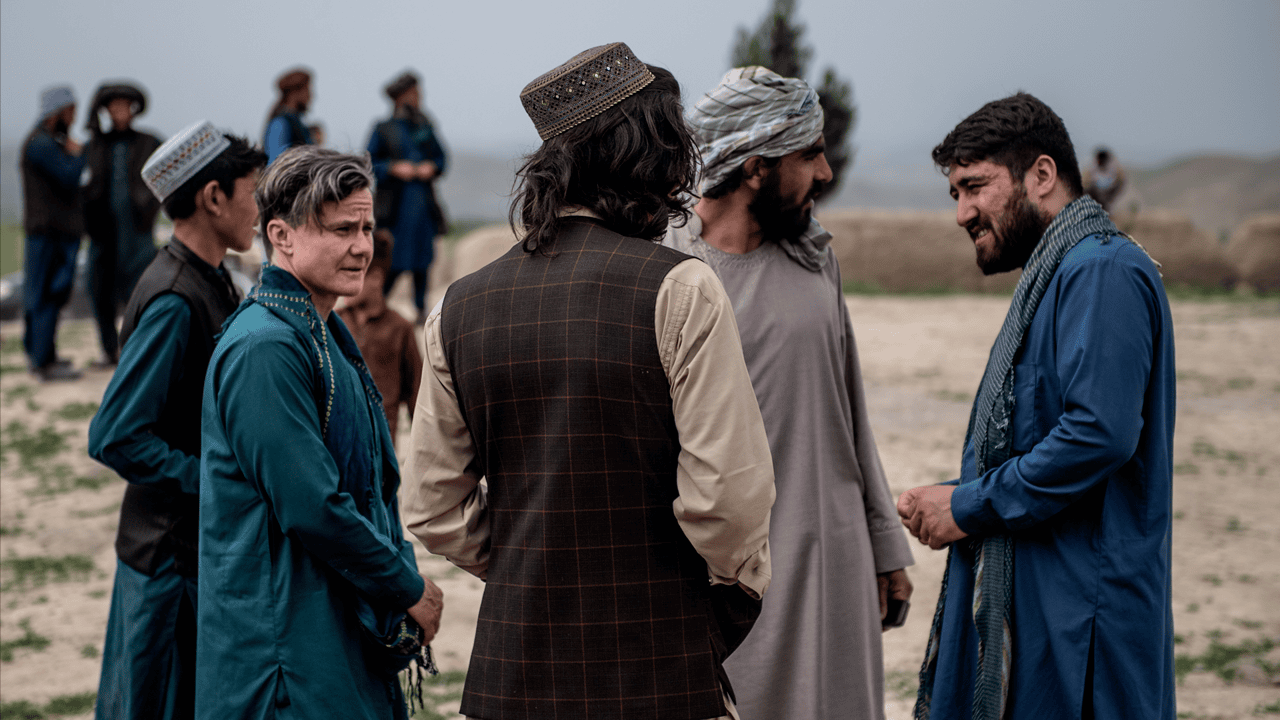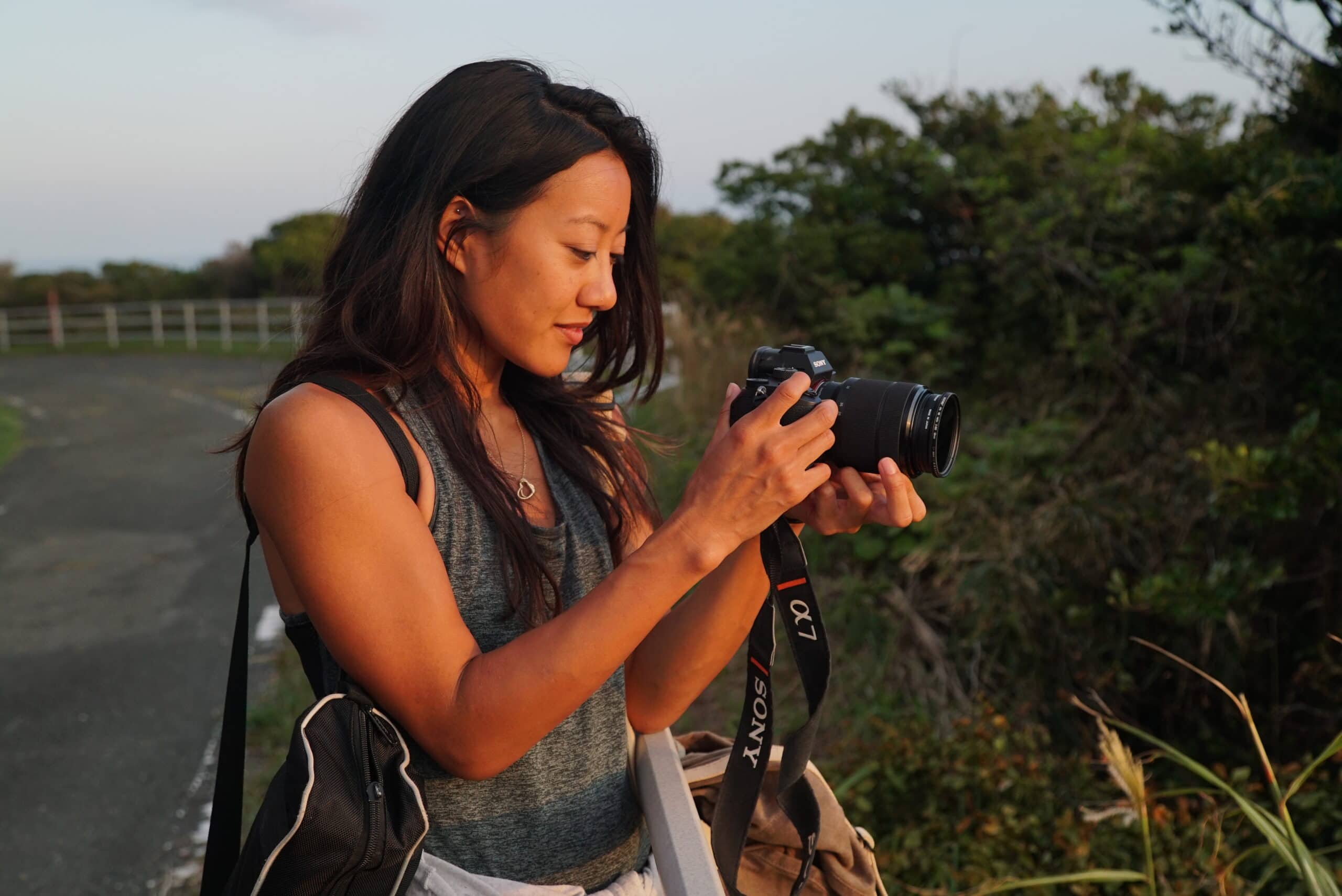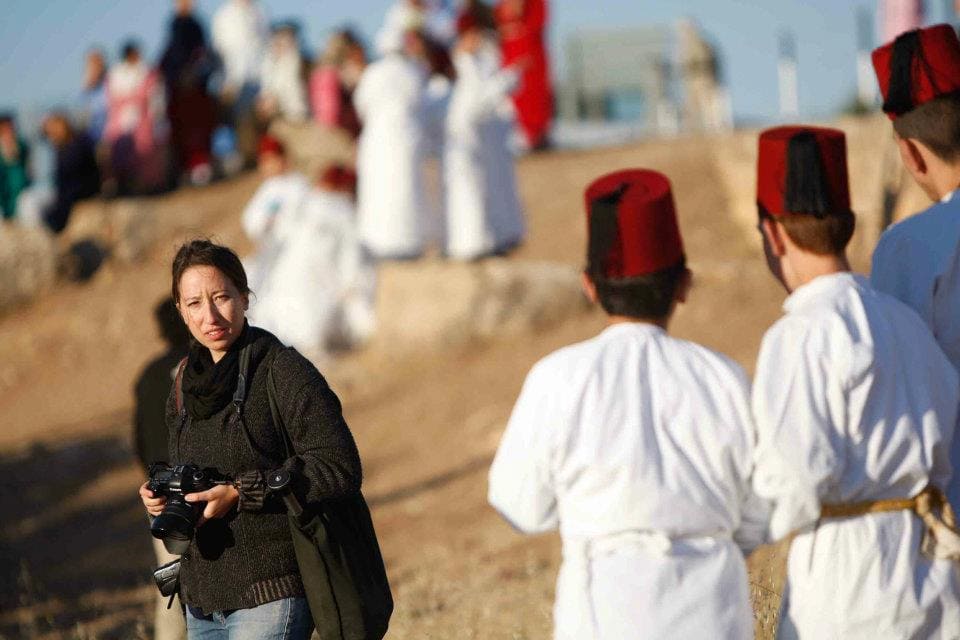Don’t quote me on that…
It’s a warning Borzou Daragahi has been given many times while traversing the Middle East — and on this occasion, it came from a man holding onto the barrel of a Kalashnikov.
This is not just good storytelling, it’s also good visual storytelling, painting a vivid picture with words that’s drills deep into the reader’s mind. And it’s not too radical to say that accomplishing this is quite similar to how other visual storytellers, say in television or photography, elevate their narratives. By getting out of the office, and exploring environments filled with interesting sensory details, and taking the audience with them for the ride.
Daragahi has done this in conflict zones in Iraq, Syria, Lebanon, and Egypt. And while he’s first and foremost a print reporter, he says it’s critical that he thinks like a visual storyteller.
Don’t just talk… do something
Daragahi says at the inception stage of a print piece, he’s looking for a setting that could be in a documentary. “Instead of a one-on-one in an office… go with the politico into a sports stadium where they’re meeting kids.”
He did just that with the mayor of Istanbul, and followed him around as he shook hands and posed for photos with members of various neighborhood sports clubs. “They all cheered as he came in, and they all hugged him.” Daragahi says moving away from the sterile Q&A over a desk, allows him to witness interactions and emotions — the same qualities needed for riveting storytelling.
Finance stories can be a boring numbers game
The Libyan conflict that ousted Mummar Gadafi led the country into a major economic collapse. Daragahi went there to cover the politics and conflict as well as the dire financial situation, and he was certain of one thing.
“You know what, I didn’t want to sit at some asshole’s desk and listen to lies for an hour.”
Financial and business news can spiral into a cadre of statistics that puts numbers ahead of people. And that’s a trend for armchair storytellers as well, stuck in their home offices with nothing more than quotes and figures.
In Libya, Daragahi shied away from analysts, and instead followed garbage collectors around the city and searched for migrants out at sea. Later when covering Istanbul’s economic crunch, his focus was on a shoe factory, barely staying afloat on the outskirts of Istanbul.
Getting out helps interviewees open up
Militias in Iraq’s Anbar province were fighting back ISIS, which at one point controlled a third of the country. Daragahi made several trips to the region between 2014 and 2018, and was faced with the same challenge posed to him by politicians: hours-long office chats filled with talking points.

Courtesy of Borzou Daragahi
Instead, he maneuvered his way down the rural roads outside of Fallujah, where Shia fighters were handing out aid to residents recently freed from the terrorist group.
His escort, sitting next to a mounted machine gun and clutching a semi-automatic rifle, mused that the locals were cheerily waving at his men during the day, and probably shooting at them at night. It was a striking quote, as Daragahi recalls, because just a few years earlier an American soldier said something eerily similar to him during the US occupation of Iraq.
Invite the reader into the story
“They’re here.”
That’s the first line Daragahi wrote in a piece about the Iraqi police storming the Baghdad market. He could have lead with the exposition dump, describing how residents considered these forces bonafide death squads. Instead, Daragahi gave the warning directly to his audience.
“Don’t just tell the reader that people are running for their lives,” he explains, pointing out that the audience should be struck with the same fear, “have them run for their lives too.”
However, there’s a caveat: writing like this takes practice. “If you’re not a professional, be modest in how you tell a story.” There are traps that novices fall into when trying to capture the audience’s attention, such as hyperbole, wordiness, and fabrication.
For those without years of writing experience it’s better to play it straight. Often enough, reality is more interesting than fiction. And after gathering the facts, Daragahi half jokingly says, “you might just want to hire me.”



